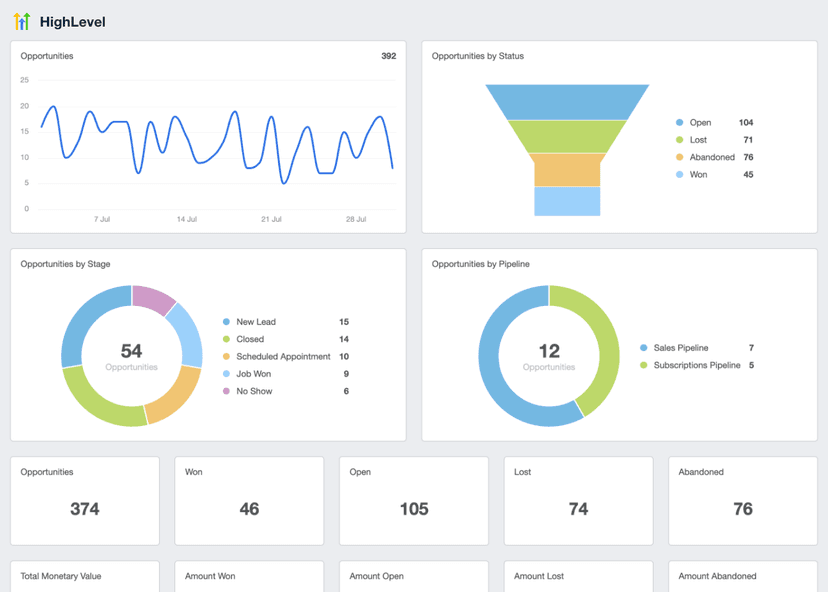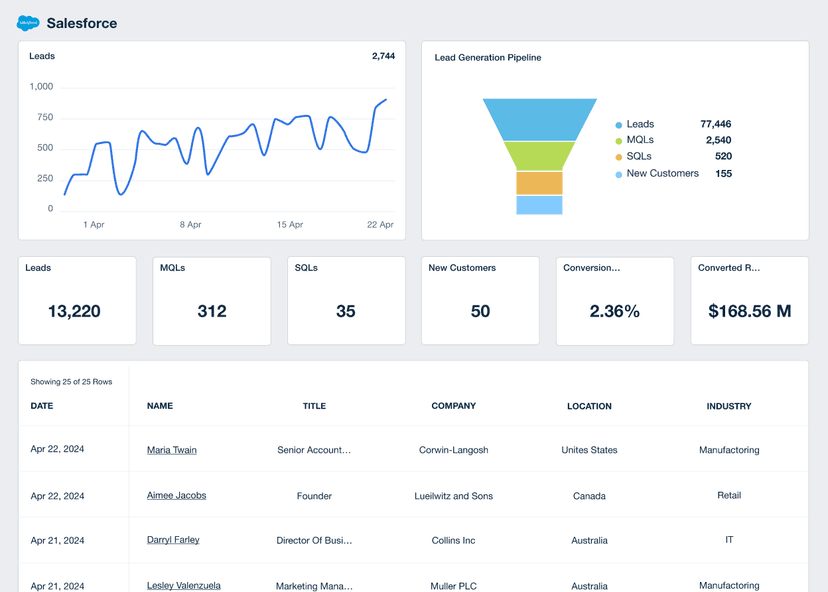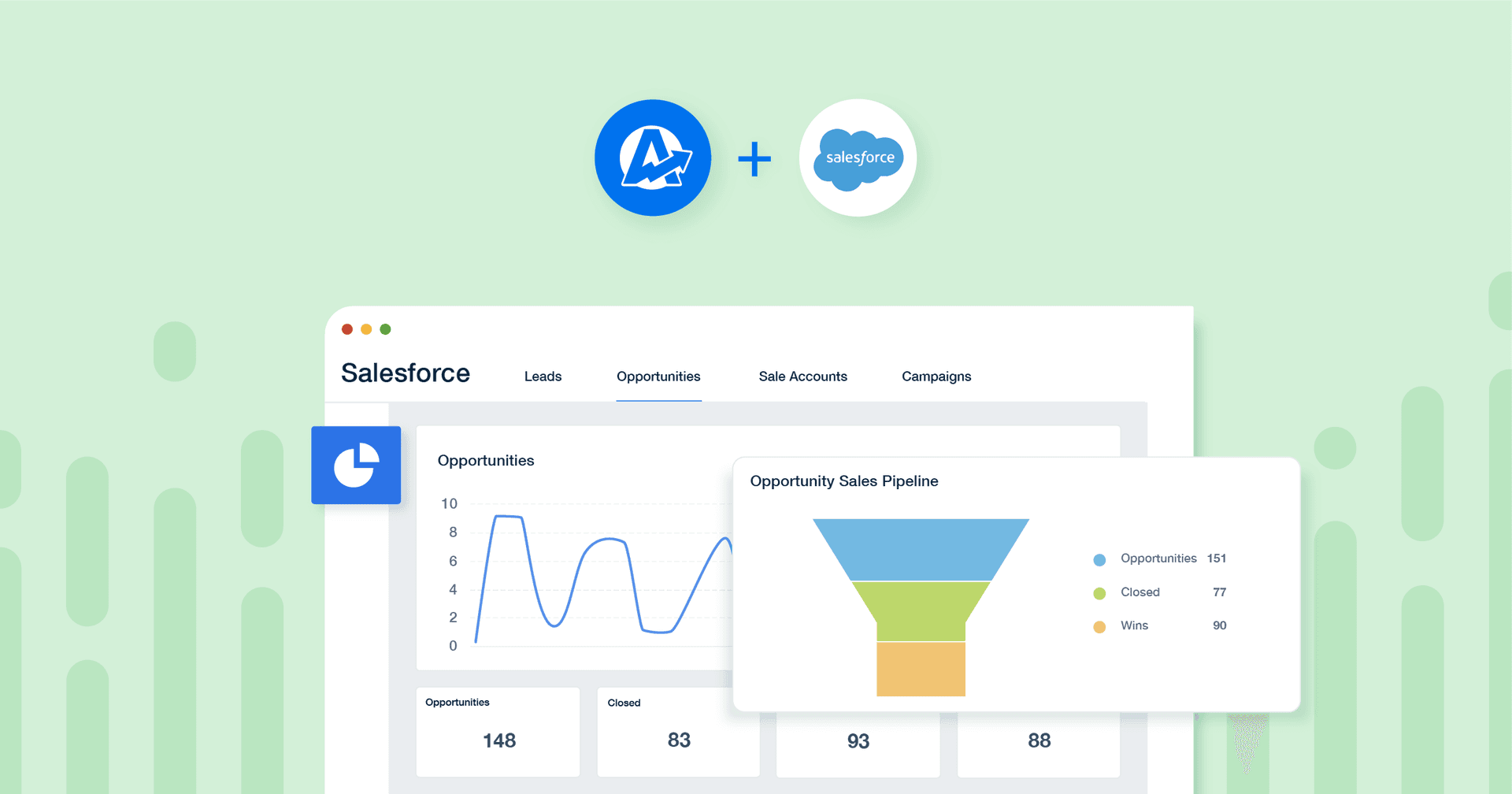Win Rate
Strategic Adjustment
Identify patterns in successful deals to refine sales strategies.
Performance Tracking
Monitor individual and team performance based on leads vs. closed won deals over time.
Opportunity Analysis
Assess the quality and potential of lead generation programs to prioritize efforts.
Client Reporting
Showcase Win Rate in client reports to demonstrate lead-generation efficacy.
Understanding Sales Success Using Win Rate
The Sales Win Rate is a strategic compass guiding the entire sales process. This metric serves as a clear indicator of a sales team's ability to convert opportunities into tangible wins. High win percentages are indicative of a strong sales strategy and skilled sales execution.
Sales Win Rate helps sales leaders identify areas needing improvement. It serves as a barometer for the health of the sales process, highlighting whether strategies need refinement or if further training is required for sales reps.
Win Rate also reflects the quality of sales-qualified leads and the efficiency of the average sales cycle.
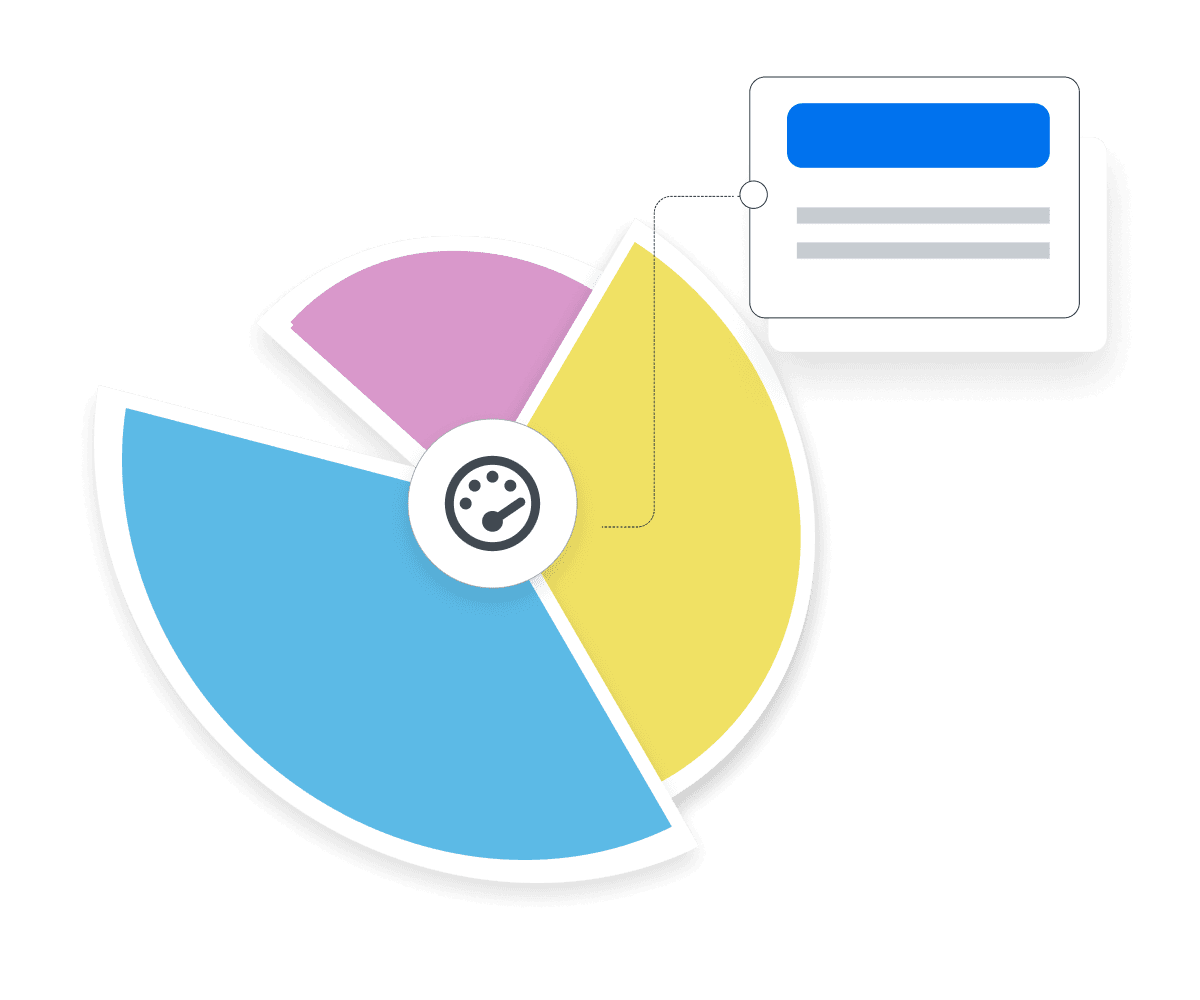
Stop Wasting Time on Reports. Get Marketing Insights Faster & Drive Results.
Win Rate's Role in Sales Metrics
Sales Win Rate significantly influences key marketing metrics, notably Cost Per Lead and Average Order Value (AOV). A higher Win Rate justifies a higher Cost Per Lead. If a larger portion of leads convert into sales, investing more in acquiring each lead is reasonable, as the probability of each lead turning into a successful sale is greater.
That said, there’s a balance between AOV and Win Rate. Targeting high-value deals often leads to longer sales cycles and a lower Win Rate, as these deals are typically more challenging to close. However, the higher revenue from these deals often offsets the lower Win Rate. A lower Win Rate isn't necessarily a concern if the focus is on high-ticket items, as the total revenue may still be substantial. Therefore, the Sales Win Rate should be evaluated in conjunction with AOV to get a complete picture of revenue impact.
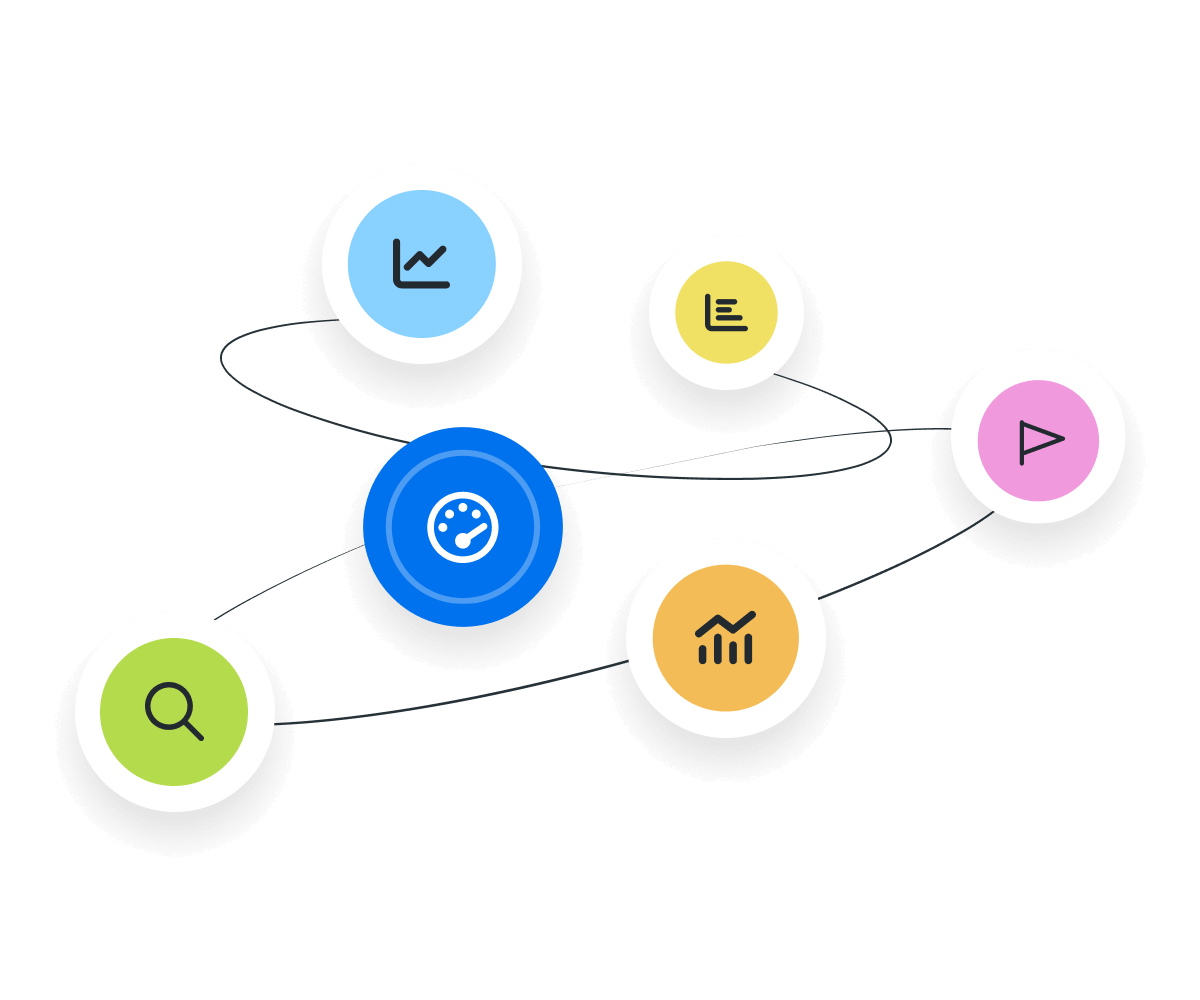
Indicators Beyond the Closed Deal
There is a critical relationship between Sales Win Rate and post-sale metrics like Churn Rate and Cancellation Rate. A high Win Rate, when coupled with high Churn or Cancellation Rates, may indicate that sales strategies might be overly aggressive or potentially misleading.
This clash often arises when a sales team prioritizes closing deals over setting realistic expectations, leading to customer dissatisfaction post-purchase. A disconnect in this regard may damage brand reputation and long-term customer relationships. Thus, Churn and Cancellation Rates serve as checks and balances for the Sales Win Rate.
Establishing Win Rate Criteria for Effective Measurement
Establishing clear Win Rate criteria is essential for accurately assessing sales performance. Without defined criteria, Win Rate measurements may be misleading, including deals of varying sizes and complexities.
Common examples of Win Rate criteria include lead status (such as MQLs, SQLs, or PQLs), deal size, industry type, client demographics, or firmographics. These criteria help in segmenting Win Rates to understand performance in different market segments or for different product types.
Another key differentiator when calculating the Win Rate is the deal stage. Closed Won refers to deals successfully secured, while Closed Lost denotes opportunities that have decided against purchasing. Some Win Rate calculations will be based on closed versus lost, while others will be based on closed versus all qualified leads, including those who have stalled in their decision. Deciding which denominator to use impacts the win ratio calculation.

How To Calculate Win Rate
Calculating Win Rate is straightforward yet critical in measuring sales success. To calculate it, divide the number of deals won by the total number of opportunities, then multiply by 100 to get the win percentage. This calculation is a reflection of the effectiveness of the entire sales process.
Sales Win Rate Formula Example
What Is a Good Sales Win Rate?
Typically, anything above 50% is considered a very good Win Rate, indicating more wins than losses in sales efforts. A Win Rate at this level indicates that efficient and effective sales strategies are in place.
What Is a Bad Sales Win Rate?
A Win Rate below 25% is concerning, often suggesting the need for significant strategy or team skill improvements. However, these general averages do not account for the industry, deal size, competition, or sales complexity.
How To Set Win Rate Benchmarks and Goals
Always analyze historical data to set realistic benchmarks, considering industry standards and past performance. Back-calculating required Win Rates to meet revenue targets helps align sales efforts with the overall business goals.
Diving deeper into Win Rates by salesperson or product provides more granular insights, helping to identify specific areas for improvement or successful tactics.
Why Win Rate Matters to Clients
Clients view Win Rate as a direct measure of the capability of sales teams to turn opportunities into revenue. A high Win Rate signifies effective sales strategies and strong product-market fit, assuring clients of the team's competency in driving business growth.
It reassures clients of the sales team's skill in steering the sales journey to successful closures, reflecting their ability to transform sales-qualified leads into revenue. This metric is crucial for clients as it directly relates to business growth and return on investment.
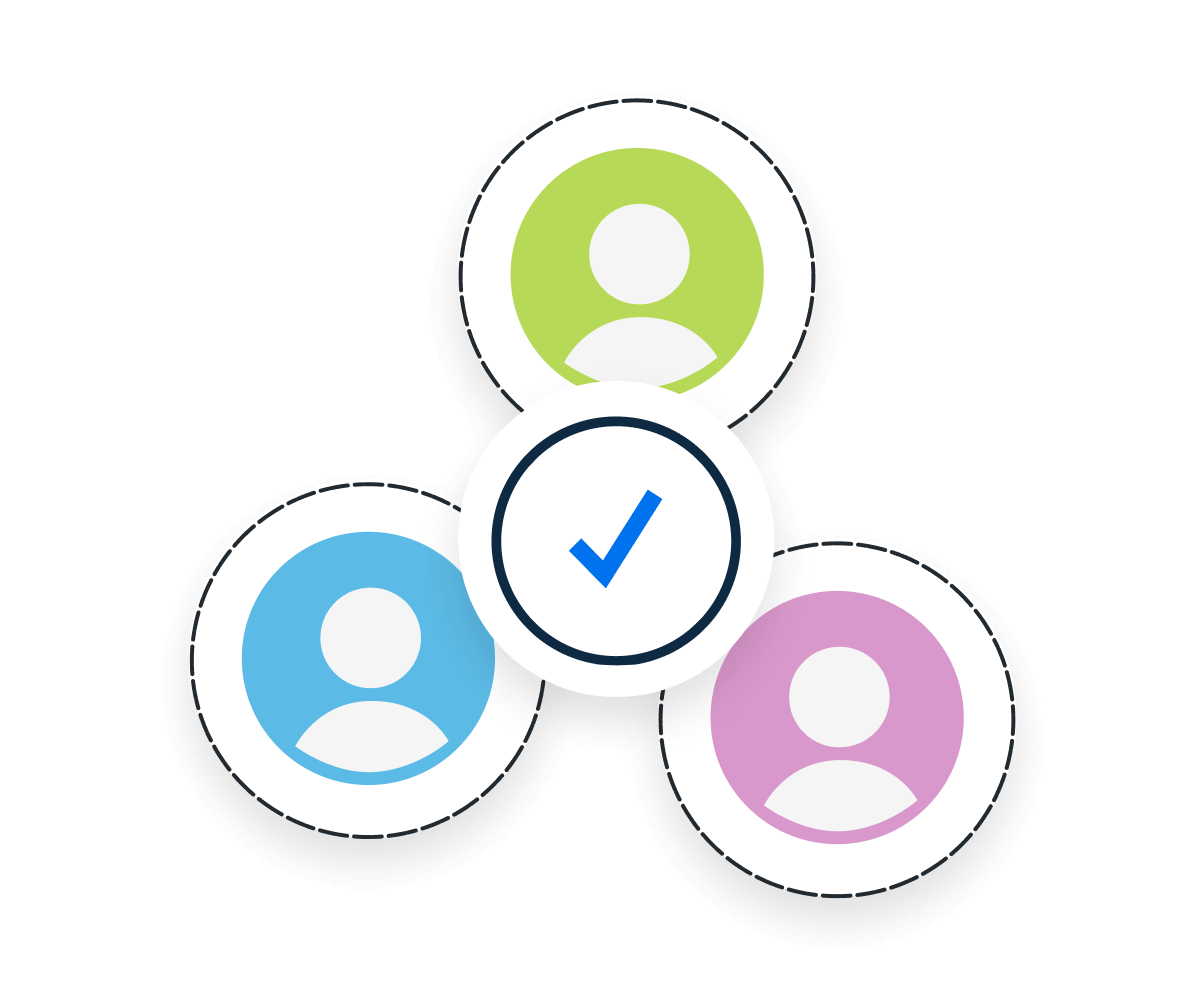
Win Rate's Significance for Agencies
For marketing agencies, Win Rate holds a different but equally significant meaning. It acts as a litmus test for the effectiveness of their lead generation and marketing strategies. A rising Win Rate signals that the agency's campaigns are reaching the target audience and resonating with them, leading to successful conversions.
Conversely, a declining Win Rate prompts agencies to reevaluate and refine their marketing efforts. It's a critical metric that influences how agencies adapt and optimize their strategies to meet client needs and market dynamics.

Enhancing Win Rates Through Effective Lead Scoring
Lead scoring and quality directly impact Win Rates. Prioritizing high-quality leads – identified through strategic lead scoring – significantly improves sales conversion rates. A robust lead scoring system means that sales teams focus on the most promising prospects, leading to higher Win Rates and better use of resources.
Lead scoring and qualification metrics also create a vital feedback loop for lead generation activities. They provide actionable insights into which types of leads are converting and why, helping marketers refine lead-generation strategies. This continuous improvement cycle helps in consistently driving more high-quality leads, further enhancing the Win Rate and overall marketing effectiveness.

Automatically Pull Data From 80+ Marketing Platforms To Create Client Reports in Minutes.
Best Practices When Analyzing and Reporting on Win Rate
By conducting a comprehensive analysis of Win Rate, agencies and clients identify strengths and weaknesses in their sales and marketing strategies, leading to targeted improvements and more successful outcomes.
Data Precision
Ensure accurate tracking of sales opportunities and outcomes for reliable Win Rate analysis.
Time Trend Analysis
Monitor Win Rate changes over time to identify trends and seasonality impacts.
Channel Comparison
Compare Win Rates across different channels and campaigns to determine the most effective sales avenues.
Contextual Understanding
Understand the factors influencing Win Rate, like market changes or product adjustments.
Visual Clarity
Use visualizations to effectively communicate Win Rate trends and insights.
Goal Alignment
Align Win Rate analysis with client objectives to demonstrate value and progress.
HubSpot Dashboard Example
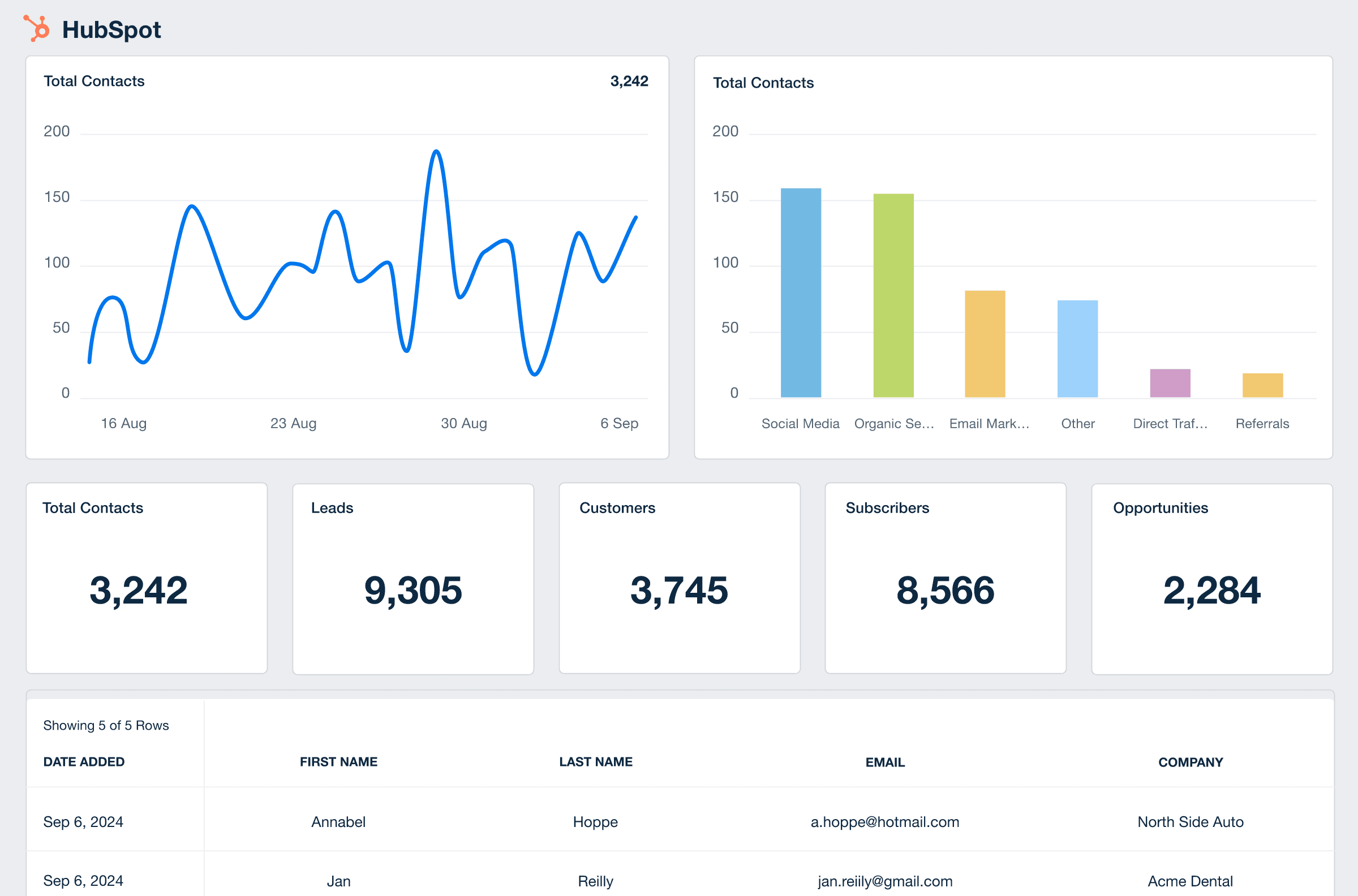
Related Integrations
How To Improve Sales Win Rate
Enhancing sales funnel efficiency is key to boosting business growth and sales rep effectiveness. These five actionable tips offer direct strategies for improving a sales team's performance, leading to higher Win Rates and more successful deal closures.
Sales Training
Investing in continuous sales training equips the sales team with the latest techniques and skills. This ongoing development ensures that sales reps are well-prepared to handle different selling scenarios.
Lead Quality & Scoring
Enhancing lead scoring systems ensures sales efforts target the most promising prospects. Focusing on leads with a higher likelihood of conversion allows sales teams to effectively concentrate resources.
Leverage CRM Data
Utilizing data from Customer Relationship Management (CRM) systems provides valuable insights into customer preferences and behavior, which is then used to tailor the sales approach.
Related Blog Posts
See how 7,000+ marketing agencies help clients win
Free 14-day trial. No credit card required.

